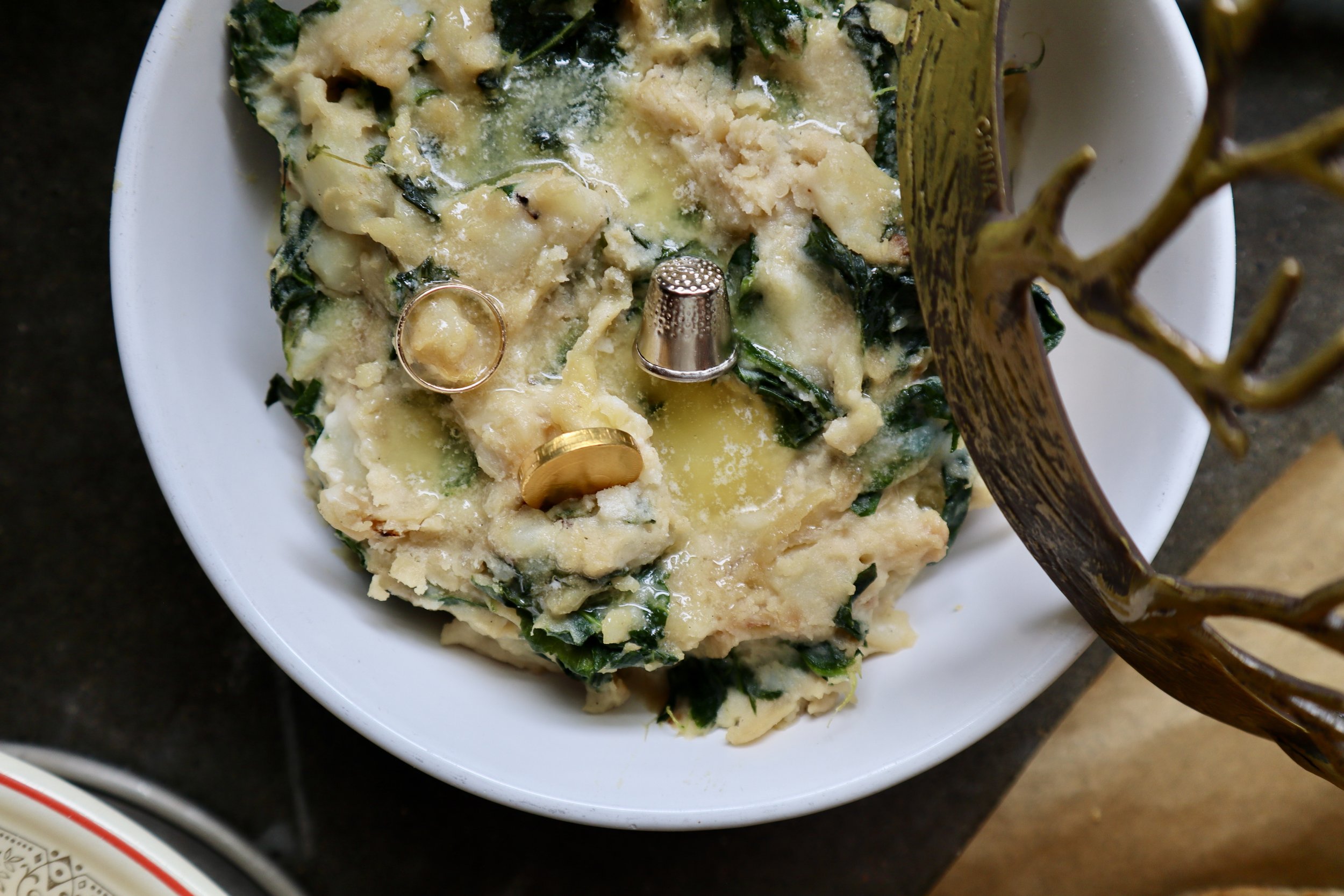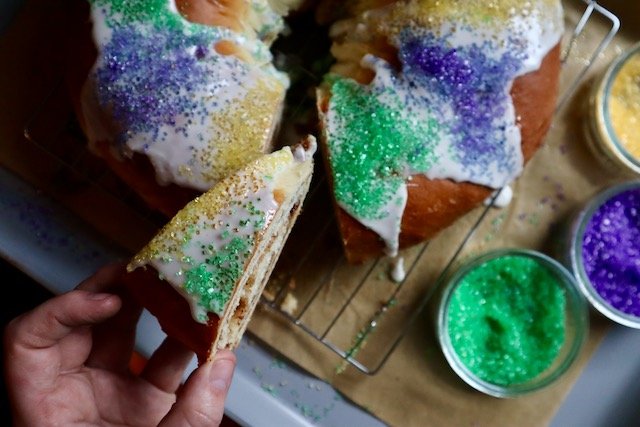Hidden Objects
story by Donna Hecker & photography by Talitha Schroeder
While testing our King Cake and its partner the French Galette des Roi, we decided to catalog the interesting phenomenon of foods containing hidden objects, thankfully none of which involve files or razor blades.
Both the New Orleans-style King Cake and the French Galette des Roi are traditional for Epiphany, but the King Cake enjoys an encore on Mardi Gras. In either, the hidden object is called a fève, usually the figurine of a baby representing the Christ child or a bean as a stand-in. A crown is awarded to the person whose portion contains the fève.
Tiny porcelain “Frozen Charlotte” dolls became popular during the Victorian era and were often substituted for the babies in King Cakes, before making their way into Charlotte Russe, having its own heyday at the time. They shared a name but not a history as the dolls were the namesake of an underdressed poetic heroine who froze on her way to a ball.
Also from the British Isles, it was traditional for families to hide a sixpence coin in their Christmas puddings, conveying good luck to the person whose portion contained it.
On the other side of the Irish Sea, colcannon was linked to Samhain (aka Halloween aka harvest festival.) It was originally made with cabbage only; the Irish happily added potatoes when they became available. Eventually the cabbage was replaced or accompanied by kale. Various trinkets were embedded in the dish – coins for wealth or rags for poverty; a button meant a bachelor would stay that way, a thimble predicted a spinster, and a ring heralded a wedding. The same items might be baked into barmbrack too – another Halloween favorite in Ireland – portending similar outcomes.
Sometimes the hidden object is edible. The fève in a Galette des Roi might be a whole almond. An almond also makes an appearance in a Scandinavian rice pudding (Risalamande), another Christmas favorite. It’s made with chopped almonds and whipped cream and served with a warm cherry sauce. A prize is awarded to the person who finds the whole almond. Some families joke that the winner keeps it a secret by hiding the almond in their cheek until all the pudding is gone.
It’s not always food that hides a surprise. We remember a night at Holly Hill Inn when a young man ordered a champagne toast for his table of six and asked us to drop an engagement ring in his girlfriend’s glass. In retrospect, it probably wasn’t the brightest idea but no one went to the ER and the stunt was a success.
And we’d be remiss if we omitted that most uniquely American icon – the fortune cookie. Actually thought to have originated in Japan, fortune cookies were reproduced in California by Japanese family-owned chop suey joints. They were then popularized by West Coast Chinese restaurants before proliferating across the US as GIs returning from WWII by way of San Francisco demanded to know why their hometown Chinese restaurants didn’t have them.
“Look before you swallow. A treasure may hide within.”
Related Content
King Cake
King Cake is a classic Mardi Gras treat but it’s also popular for Christmas, especially the Feast of the Epiphany. Here’s a version from our Midway Bakery for you to try at home. If you can’t get your hands on a little plastic baby for the fève, feel free to wrap a coin in foil. And don’t forget to warn your guests!
© 2023, Holly Hill Inn/Ilex Summit, LLC and its affiliates, All Rights Reserved





